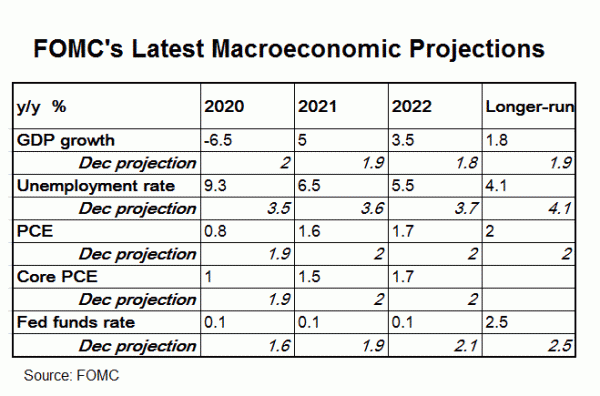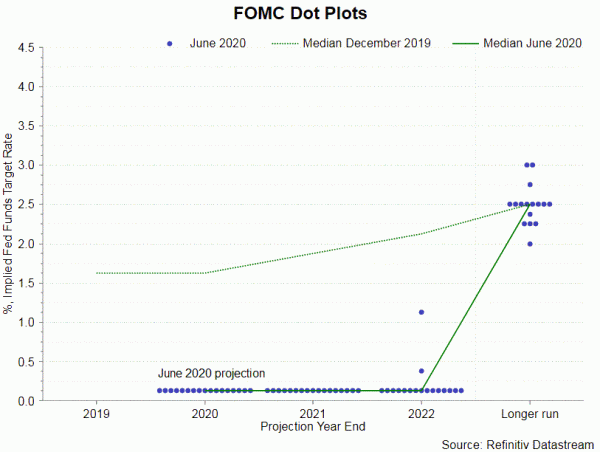As expected, FOMC left its monetary policy measures unchanged and downgraded the macroeconomic outlook. The members also project that the policy rate will stay unchanged through 2020. The accompanying statement showed few changes. Yet, the pledge to increase purchases by at least their current rate signals that the central bank will likely do more rather than less to stimulate the economy.
At the policy statement, the members reiterated that “the coronavirus outbreak is causing tremendous human and economic hardship across the United States and around the world”. Yet, they also noted that “financial conditions have improved, in part reflecting policy measures to support the economy and the flow of credit to US households and businesses”. In April, the members were concerned that “the disruptions to economic activity here and abroad have significantly affected financial conditions and have impaired the flow of credit to U.S. households and businesses.
On the macroeconomic outlook, real GDP will contract -6.5% in 2020, before rebounding to 55 and 3.5% in 2021 and 2022 respectively. The long-term outlook GDP growth forecast was revised by one-tenth of a percentage point to +1.8%. The unemployment rate was expected to hit 9.5% by end-2020, before dropping to 6.5% and then to 5.5% by end if 2021 and 2022 respectively. Longer term forecast on the jobless rate stays unchanged at +4.1%. On inflation, headline PCE was revised sharply lower to +0.8% this year. Inflation will then improve to +1.6% in 2021 and then to +1.7% in 2022. Core PCE will reach 1% this year, before recovering to +1.5% and +1.7% in 2021 and 2022, respectively.
On the monetary policy, the policy rate stayed unchanged at 0-0.25%. QE also remains intact. On the policy outlook, the median dot plot shows that the policy rate will stay unchanged through 2022. As noted in the statement, the Fed has planned, “over coming months” to “increase its holdings of Treasury securities and agency residential and commercial mortgage-backed securities at least at the current pace”. This marks a step further from April’s reference that the Fed will “will continue to purchase Treasury securities and agency residential and commercial mortgage-backed securities in the amounts needed to support smooth market functioning, thereby fostering effective transmission of monetary policy to broader financial conditions”.















